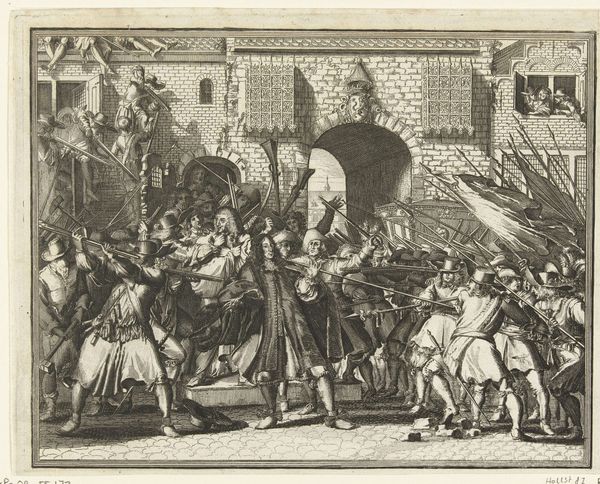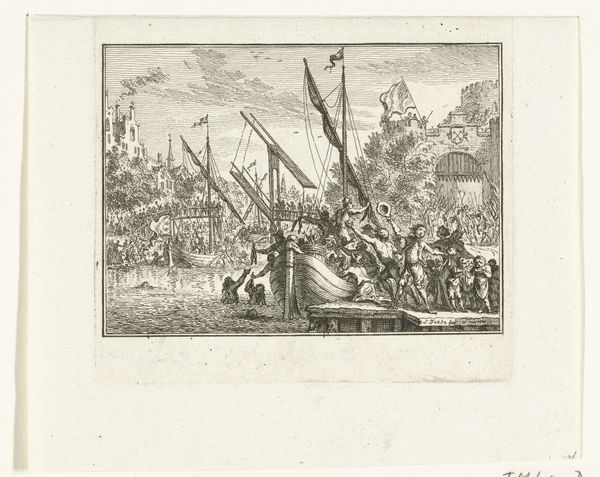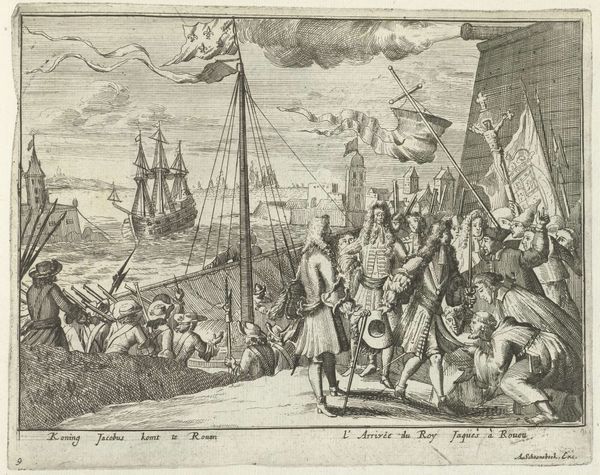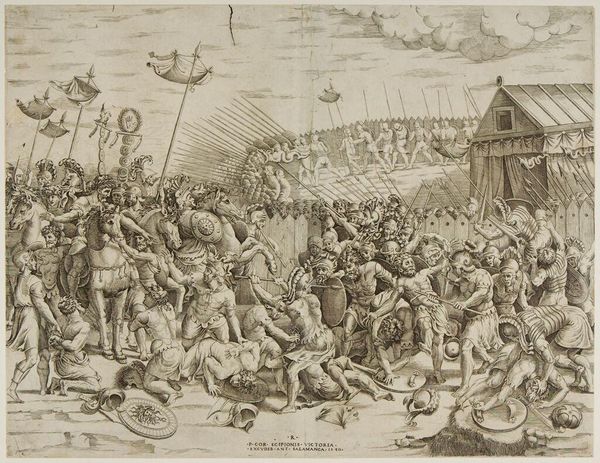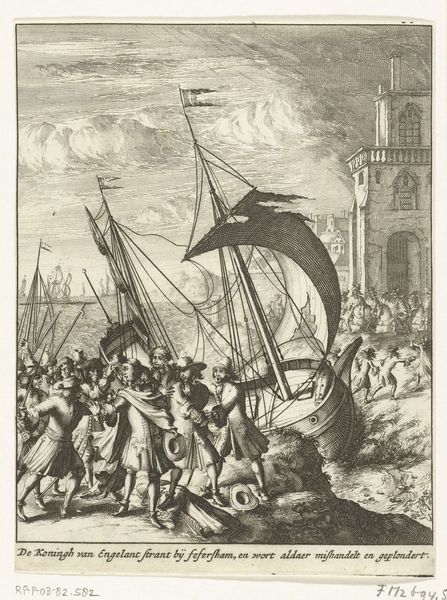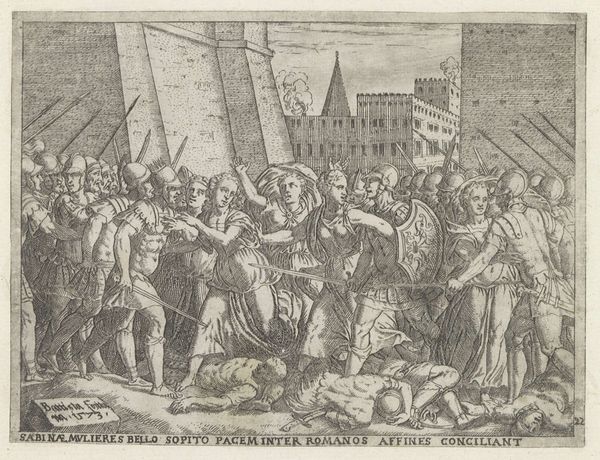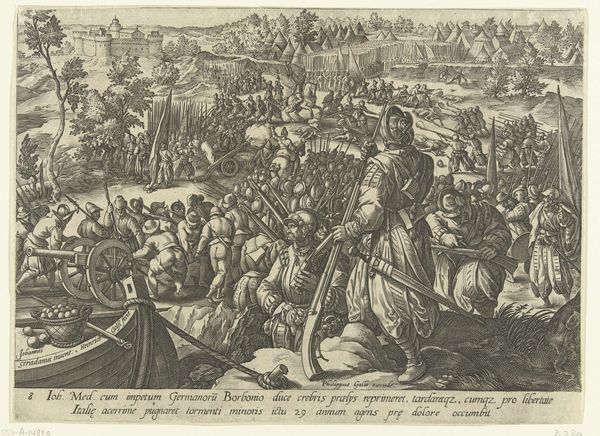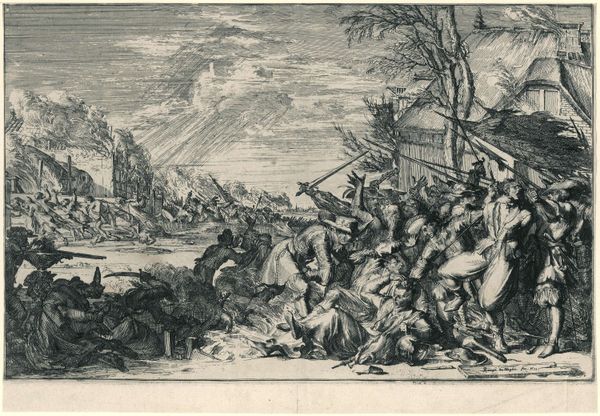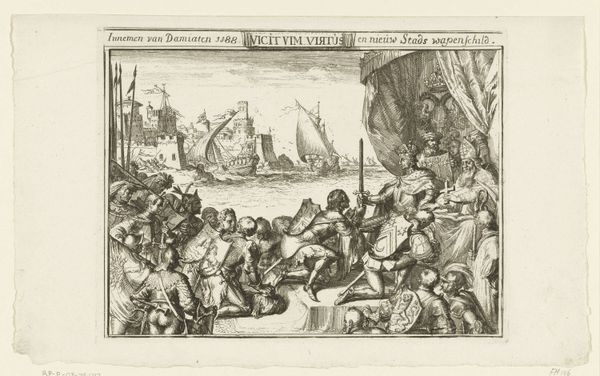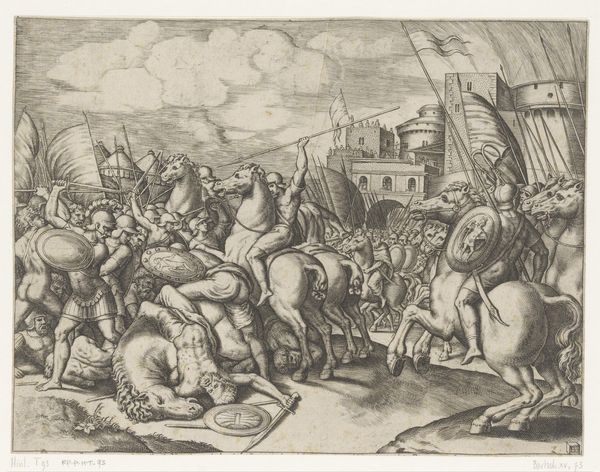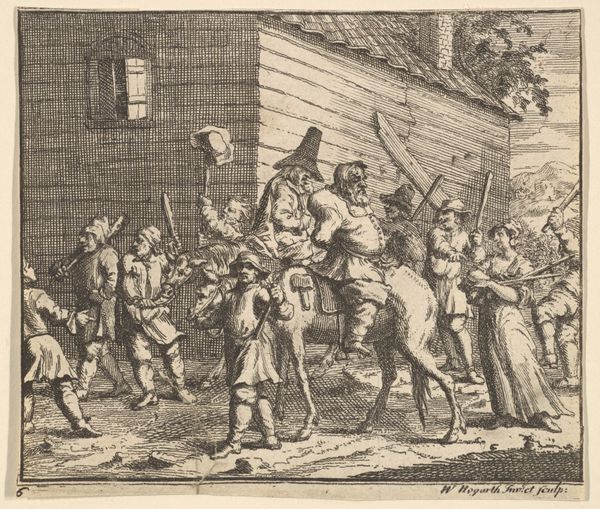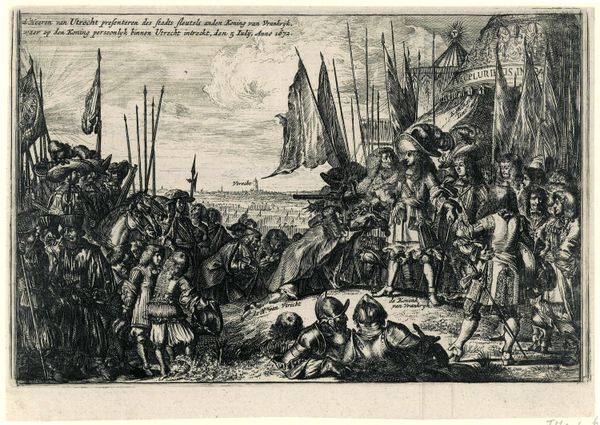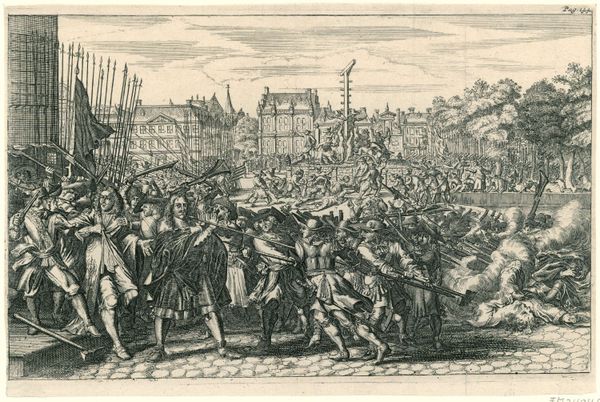
print, engraving
#
narrative-art
#
baroque
#
dutch-golden-age
# print
#
figuration
#
line
#
cityscape
#
history-painting
#
engraving
#
realism
Dimensions: height 154 mm, width 196 mm
Copyright: Rijks Museum: Open Domain
Curator: This engraving, simply titled "Aanval op Cornelis de Witt, 1672," depicts a scene of intense violence in the Netherlands, created in that very year. The artist is anonymous, but their rendition is remarkably evocative. Editor: Evocative indeed! My immediate feeling is one of chaos and mob rule. Look at the frenzied energy captured through the sharp lines—almost like shards of glass. Curator: It’s vital to contextualize the print within the historical narrative. Cornelis de Witt was lynched by a mob in The Hague amid political upheaval. This image then isn't just a depiction, it’s a politically charged document reflecting a moment of intense social unrest, and how power operates within crowds. Editor: Absolutely. Thinking iconographically, the weapons—the pikes, the flags—they represent a breakdown of social order, a descent into barbarity. The building in the background—is that the prison? It looms, an uncaring structure as this drama unfolds. Curator: Precisely. And consider the very act of producing and circulating this image. It plays a role in constructing a collective memory. Was it meant as a cautionary tale? A justification of popular anger? These visual documents cement or rewrite existing ideological narratives. Editor: It's also interesting how the central figures—presumably Cornelis de Witt and those trying to protect him—are being stripped. Consider the psychological weight of that act. A public disrobing equates to public humiliation. Their vulnerability is laid bare, emphasizing the power dynamics at play. Curator: It reflects too, perhaps, how the elite class were literally exposed and ultimately sacrificed in order to serve the shifting landscape of social change at that particular moment. The de Witts were symbolic of the old order that needed to be violently upended. Editor: It's difficult not to read contemporary anxieties into this as well—how easily societies can be inflamed, how quickly justice can be replaced by vengeance. Symbols and emotions depicted still resonate. Curator: In approaching the print through this lens, it encourages a dialogue that transcends the merely historical—how art and historical processes interact in creating meaning for generations. Editor: And for me, this reinforces the continuing potency of symbols. What looks like just another image from the past is still loaded with cultural and psychological impact.
Comments
No comments
Be the first to comment and join the conversation on the ultimate creative platform.
